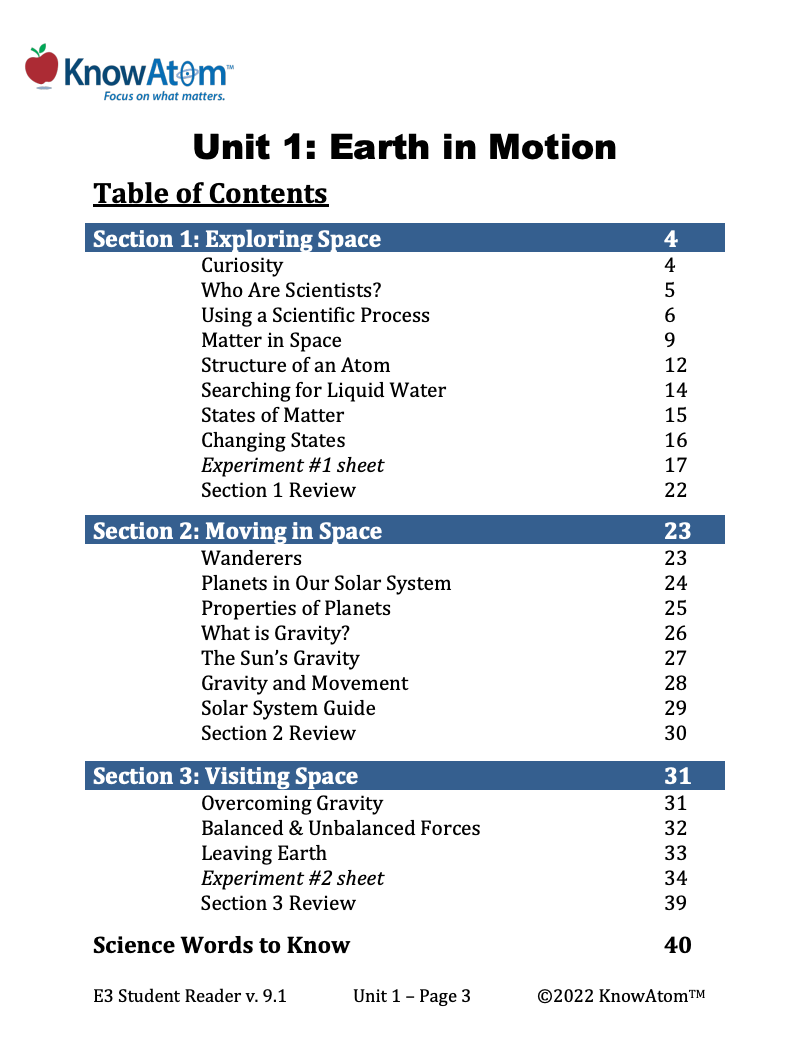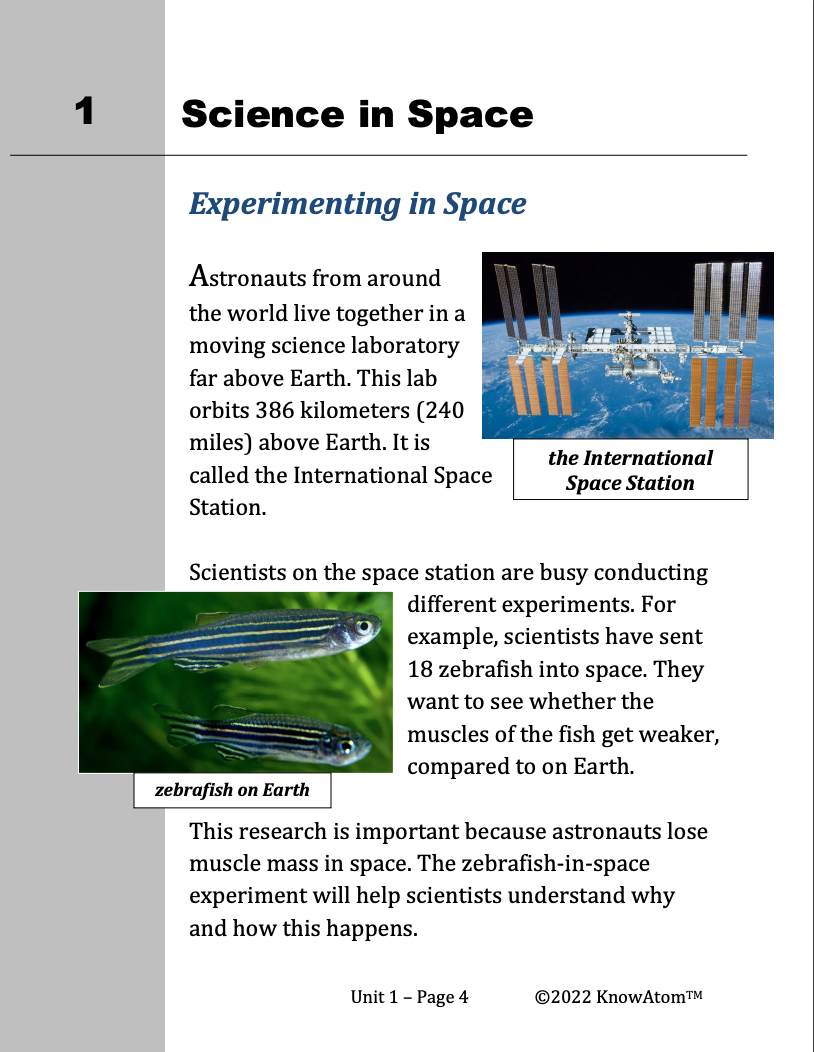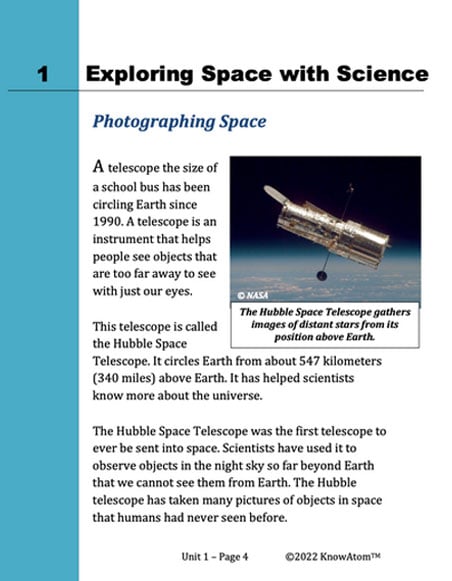
In this lesson, students model the solar system and analyze Earth’s place in the system as well as how the force of gravity causes the planets to move around the sun in predictable, regular paths. This page serves to highlight the key components of this lesson.

In this unit, students analyze the phenomena of matter, forces, and energy. In this lesson, they compare the effects of unbalanced versus balanced forces on objects. They then evaluate how matter interacts with and is changed by energy, which transfers from one object or system to another. This page showcases key components of this lesson.

In this unit, students explore science phenomena related to patterns that result from Earth’s rotation and the moon’s orbit around the sun. This page provides a brief overview of lesson two of this unit, in which students conduct two investigations and use the patterns they discover to make predictions about the future positions of the sun, moon, and stars in the sky. In the first investigation, students observe the sun’s position in the sky at different times of day, drawing a diagram (model) of the sun’s position above the horizon. In the second investigation, students use a sundial model to explore the relationship between the sun’s position and the length of shadows.

In this unit, students explore the science phenomena of how all matter in the universe is made up of different combinations of atoms formed from chemical reactions. In this lesson, students use scale models to compare properties of the Sun, Moon, and Earth. This page is a high-level extract of this lesson.
Standards citation: NGSS Lead States. 2013. Next Generation Science Standards: For States, By States. Washington, DC: The National Academies Press. Neither WestEd nor the lead states and partners that developed the Next Generation Science Standards were involved in the production of this product, and do not endorse it.
